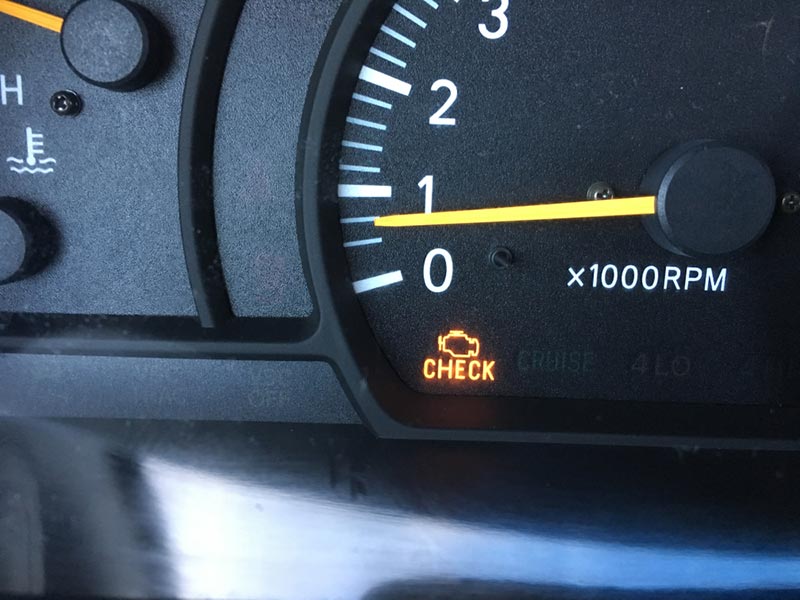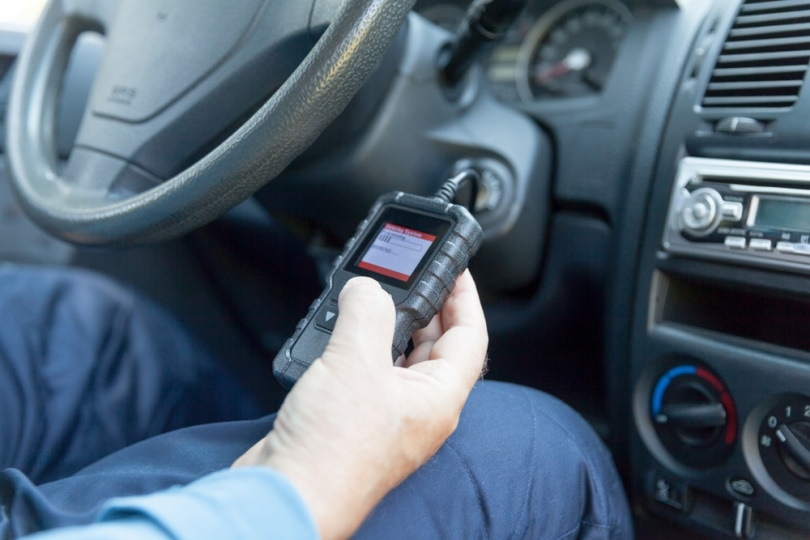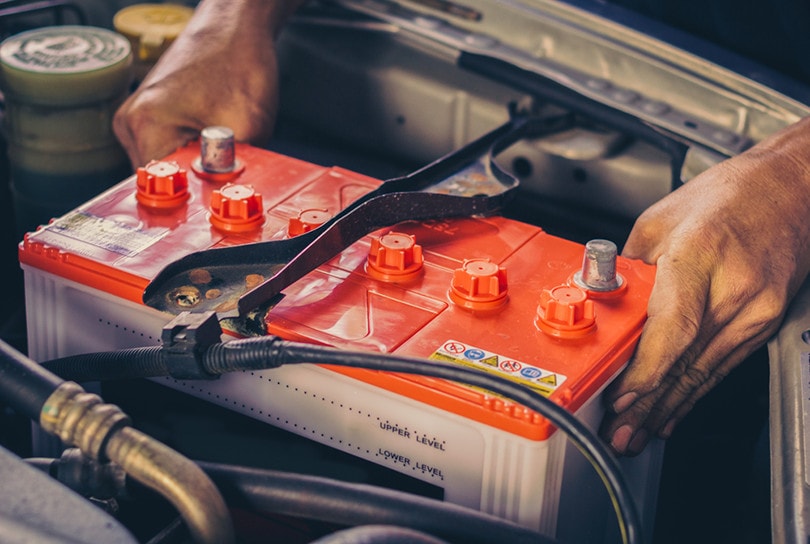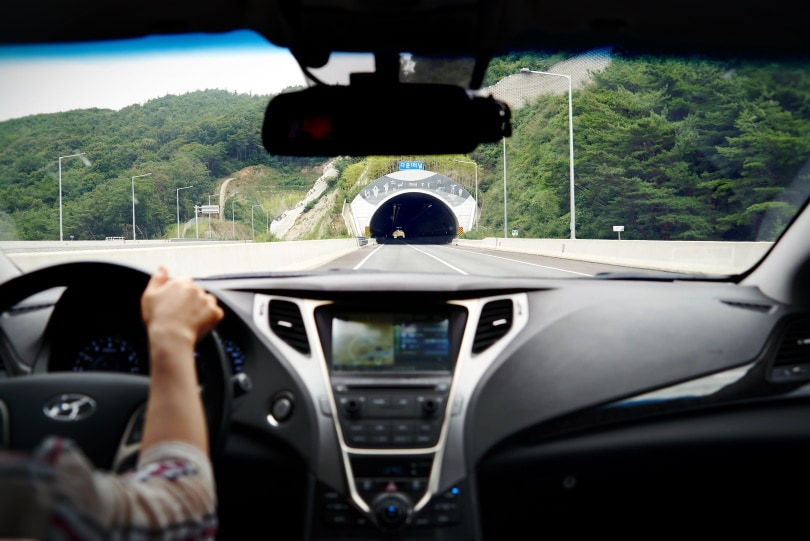Can You Drive With the Check Engine Light On? Factors, Significance, & FAQ
-
Pete Ortiz
- Last updated:

You are not the only driver who feels scared and annoyed at the same time when the check engine light comes on. This light is triggered by your vehicle’s Engine Control Module (ECM)¹ to indicate that a component associated with the engine is damaged or malfunctioning. But does it mean you should panic and contact a mechanic immediately? Or you can ignore it and keep driving?
Well, it depends on the severity of the issue, which can be noticed from the behavior of the light. Perhaps you refueled and didn’t close the fuel cap tightly. Or maybe the oxygen sensor has failed. Plus, there is a range of other possibilities.
In this article, we dissect all these possible causes of the check engine light and what to do whenever it pops up on your dashboard. Keep reading!
The Significance of the Check Engine Light
Two settings determine the extent to which your car engine is affected. The check engine light can either blink or remain constantly lit.
If it comes on and remains lit as you drive, the ECM is signaling you about a minor issue in the engine that needs servicing. A solid light means there’s an imminent failure (but not immediate) under the hood of your car. It also means you have little to worry about. To decode the error code message, you’ll need to drive your car to an auto shop and they will scan and identify the problem for you.
The second setting is when the check engine light comes on and flashes or blinks continuously. In such cases, the ECM is telling you that your engine is facing a critical issue and needs immediate attention. If this occurs while you are driving, your best course would be to stop the car immediately and call a mechanic.

What Causes the Check Engine Light to Illuminate?
As we mentioned earlier, a bunch of reasons can cause the engine light to illuminate. While it commonly has to do with the emission system, the light could also signify the following issues:
Worn Out Electric Coils or Spark Plugs
The role of spark plugs¹ in a car is to produce the spark that burns the fuel and air mixture inside the combustion chamber. They obtain the electric currents from electric coils. In older car models, each engine had only one coil, but each cylinder is fitted with a separate coil in modern vehicles.
If one of them malfunctions, the engine may misfire and consequently decrease the fuel economy. That’s why the ECM notifies you by triggering the check engine light to illuminate.
Loose Fuel Cap
Did you stop for refueling? Perhaps you did and forgot to close the fuel lid appropriately.
A loose fuel lid is one of the most common causes that prompt the check engine light to illuminate. Being an essential component of the fuel delivery system, the role of the lid is to prevent your gasoline from spilling as well as maintain pressure inside the tank by keeping the fumes inside.
Inadequate pressure in the gas tank may cause a flip-over of the whole system. Hence, to avoid such a scenario, your vehicle will speak to you through the check engine light. Always ensure to put the pack on after refueling and tighten it perfectly as directed in the user manual.

Vacuum Leaks
If there’s a leakage in your vehicle’s vacuum system, you already have enough to worry about.
The vacuum system is tasked with the role of reducing the emission of hazardous gases. Since they are often subjected to both cold and hot temperatures, the vacuum hoses can wear out and crack with time. You’ll start noticing rough idling and fluctuating RPMs. Soon after, the check engine light will illuminate to tell you that service is needed.
Oxygen Sensor Failure
The oxygen sensor¹ monitors the amount of unburnt oxygen in the exhaust chamber. It then sends the results to the onboard computer, which uses them to balance the mix of air and fuel in the combustion chamber.
Your car’s engine will continue producing power even if the oxygen sensor malfunctions. However, without the data, the onboard computer will not determine the appropriate air and fuel mixture, finally causing decreased fuel efficiency.
It’s important to address an oxygen sensor failure immediately. If the imbalance of air and fuel lingers for too long, it may damage other components such as the catalytic converter and spark plugs.

Faulty Catalytic Converter
The function of the catalytic converter in an automobile is to convert emitted carbon monoxide, which is harmful to the environment, into carbon dioxide. It is attached to the exhaust system, meaning it’s easy to repair.
Engine Overheating
When the temperature gauge rises, the check engine light lights up and you see smoke appearing from under your car, the engine is probably overheating. You need to stop the car immediately and conduct a diagnosis.
Dead Battery
A dead battery is another common reason why the check engine light illuminates. It will come on when the battery is nearing its end or when the charging system stops running efficiently. To avoid getting into situations where you have to jumpstart your car, you must replace the exhausted battery immediately after the check engine notifies you about it.

What to Do When the Check Engine Light Comes On
Panicking never helps. Whenever you see the check engine light come on, be calm, pull the car over, and analyze the situation to establish your next step. Try reasoning out these questions to decide whether it’s safe to get back on the road or not:
- Did you stop at a gas station to refill?
- Did you hear any uncommon noise before the light came on?
- Is the engine light flashing or just solid? Don’t even contemplate driving your car if the light is flashing – call a tow truck as soon as possible.
- Did the engine light show a different color option?
- Do you smell any strange odors?
Use your best judgment to decide whether you need to call a tow truck or keep driving.

How Long Can You Drive With the Check Engine Light On?
The distance you can travel when the engine light illuminates depends on whether it’s a steady or flashing light. If it’s steady, you are lucky because, after assessing the situation, you can keep driving for 50–100 miles—or hopefully until you reach your destination.
If the engine light came on because of the oxygen sensors or gas lid, driving around may allow the car time to reset or recalibrate, which will turn it off. Otherwise, you’ll have to schedule a maintenance visit to get your engine checked and fixed before the problem magnifies.
It’s worth noting that you can keep driving with the check engine light on even after exceeding 100 miles or even up to 1,000 miles. It only depends on your attitude towards fixing the issue. You must understand, however, that the longer you drive, the more damage you expose to your engine.

How Do You Shut Off the Engine Light?
Your check engine light should shut off automatically when you fix the problem that caused its illumination.
- Switch the Ignition On and Off: Insert the keys into the ignition and repetitively turn the engine on and off at one-second intervals between each position. This should reset the light.
- Disconnect the Battery: Detach the negative battery terminal and drain all the remaining energy in the capacitor. The fastest way to drain the electricity is by turning on the headlights or continuously pressing the horn for 30 seconds. Once the electricity is depleted, wait for 15–20 minutes before reconnecting it.
- Use an OBD2 Scanner: If you take your car to a service shop, the mechanic should shut off the engine light by connecting an OBD2 scanner¹ to the OBD connector located below the steering wheel. If they switch the ignition on, the OBD connector will access the car’s onboard computer and read the trouble codes. After diagnosing the issues, they address them and erase the error codes using the scanner. The check engine light should disappear when the ignition is switched off.
If you try these solutions but none of them still works, you may have to consult your user manual or dealer for further assistance.

Conclusion
Illuminating the engine light is an indication that there’s a problem with your vehicle’s engine components, battery, or gas system. Several factors determine how far you can drive your car while it’s lit up, but all depend on the severity of the issue at hand.
If the light is steady, you can keep driving from 50–100 miles without experiencing a lot of problems. However, you must stay alert for unusual sounds, speed, smell, or warning lights.
You shouldn’t drive your car around with a blinking engine light. You can only drive it to a mechanic if the distance isn’t a lot – but you must exercise great caution while on it. Stay safe on the road!
- https://www.boucher.com/blog/what-do-spark-plugs-do/
- https://www.engineersedge.com/power_transmission/engine_fuel_system.htm
- https://www.gofar.co/blog/obd2-scanner-clear-codes/
- https://vatire.com/car-maintenance-tips/is-it-safe-to-drive-your-car-with-the-check-engine-light-on/
- https://denverexpresscare.com/driving-with-the-check-engine-light-on-what-you-need-to-know
- https://getjerry.com/car-repair/how-long-can-you-drive-with-check-engine-light-on
Featured Image Credit: Sheila Shelton, Shutterstock
Contents


